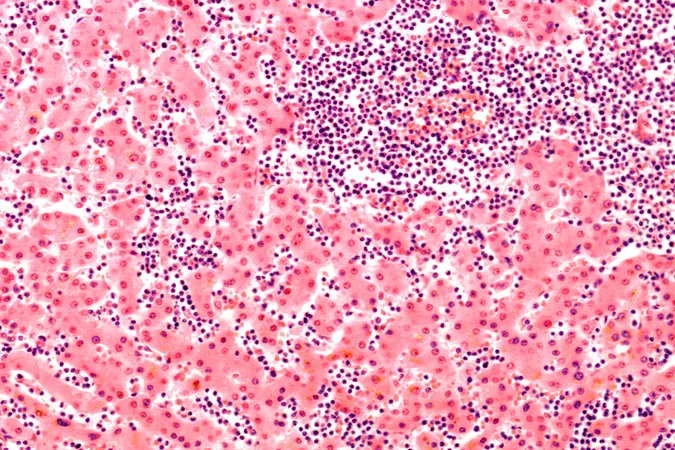
Tracking Symptoms of Chronic Lymphocytic Leukemia During Treatment: What You Need to Know
2025-03-29
Author: Nur
Understanding the 'Watch and Wait' Approach
Not all patients diagnosed with CLL require immediate treatment. If the disease is stable and symptoms are minimal, healthcare providers may recommend a 'watch and wait' strategy. This approach typically involves regular checkups and blood tests every 3 to 6 months. During this observation period, it’s crucial to monitor for specific symptoms known as 'B symptoms,' which could indicate disease progression and necessitate a shift to active treatment. B symptoms to look out for include: - Severe fatigue that hinders daily activities. - Intense night sweats that may require changing clothes or bedding. - Unexplained weight loss. - Fever without a clear cause.
Dr. Mazie Tsang, a hematologist specializing in CLL, emphasizes that even mild symptoms deserve attention. The severity of symptoms can vary widely, and tracking them can guide treatment decisions.
Active Treatment: Options and Side Effects
Once active treatment begins, various options are available, with targeted therapy being the primary choice for most patients. Unlike traditional chemotherapy, which can harm healthy cells along with cancer cells, targeted therapies specifically attack cancerous cells, resulting in fewer side effects. Nevertheless, it’s crucial to discuss potential side effects with your healthcare team. Common side effects of targeted therapies may include gastrointestinal disturbances, irregular heartbeat, unexplained bruising, and increased susceptibility to infections.
In cases where chemotherapy is deemed necessary, it may be combined with immunotherapy to enhance effectiveness. Potential chemotherapy side effects include nausea, hair loss, mouth sores, and fatigue, which could signal bone marrow suppression. This condition occurs when the bone marrow fails to produce adequate blood cells or platelets, necessitating immediate communication with your healthcare provider.
Recognizing Complications Related to CLL
Awareness of complications is vital during the course of CLL. Some key symptoms that may indicate complications include: - **Abdominal discomfort or early satiety:** Inability to eat normally may signal an enlarged spleen pressing against the stomach, necessitating further evaluation through imaging or physical examination. - **Infections:** CLL can weaken the immune system, elevating the risk of infections. It's crucial to monitor for signs of frequent or severe infections, as adjustments in treatment may be required to boost immune function.
Lymph Node Monitoring: A Simple Yet Effective Tool
Dr. Tsang encourages patients to routinely check their lymph nodes for any changes. Nodes located in areas such as the neck, armpits, and groin should be examined for firmness or rapid growth, which could indicate disease progression. Growth rates may vary significantly among individuals, but rapid enlargement—comparable to a kidney bean growing to the size of a tennis ball—should prompt immediate reporting to a healthcare provider. This could signify a serious condition known as Richter’s syndrome, where CLL transforms into an aggressive lymphoma.
In summary, effective tracking and communication with your healthcare team can significantly impact your treatment and disease management. Being proactive about symptoms, understanding treatment options, and recognizing potential complications can lead to more effective care and improved patient outcomes in the journey with CLL.



 Brasil (PT)
Brasil (PT)
 Canada (EN)
Canada (EN)
 Chile (ES)
Chile (ES)
 Česko (CS)
Česko (CS)
 대한민국 (KO)
대한민국 (KO)
 España (ES)
España (ES)
 France (FR)
France (FR)
 Hong Kong (EN)
Hong Kong (EN)
 Italia (IT)
Italia (IT)
 日本 (JA)
日本 (JA)
 Magyarország (HU)
Magyarország (HU)
 Norge (NO)
Norge (NO)
 Polska (PL)
Polska (PL)
 Schweiz (DE)
Schweiz (DE)
 Singapore (EN)
Singapore (EN)
 Sverige (SV)
Sverige (SV)
 Suomi (FI)
Suomi (FI)
 Türkiye (TR)
Türkiye (TR)
 الإمارات العربية المتحدة (AR)
الإمارات العربية المتحدة (AR)